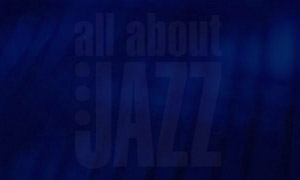Line up for Vienne was announced last week and it was staggering to see so many names who have appeared over the last three years materialise once again. I was also quite staggered to see that, for the second year, more creative aspects of jazz seem to be marginalized. Some of the non-jazz gigs often transpire to be really good so you can't criticise until you have heard the music. There is always the possibility of hearing something different such as Teduschi Trucks last year which I felt produced the best gig of 2014 by a country mile.
Oddly, I regularly look at this link to see what the jazz record buying public in the supposedly "savvy" US are putting in their baskets.
It is satisfying to see some familiar names like Eddie Henderson, Steve Turre, Charles McPherson, Russell Malone, Jeremy Pelt and Kevin Eubanks turn up in list but it is amazing just how many unfamiliar names are listed. When you google them the results turn up a comfortable mainstream that is almost hidden in the UK. The only "progressive" musician on the list is Vijay Iyer and the Brit jazz scene is represented by Jamie Cullum !!
I find it strange that so many stellar labels like Delmark, Sunnyside and Criss Cross are not represented and more "visible" specialist labels seem under-represented. Is the US jazz audience really so conservative and no representative is this chart of the market for jazz in the global scale of things. Is the audience really so conservative and are the motivating elements that drive the music forward so loved of both SA and myself so niche? Reading this list makes you think that the jazz audience has lost it's bottle.
2015 is turning out to be a strange year for new releases. We are already in April and I haven't seen anything that especially piques my interest other than the DeJohnette album with a load of old Chicago cohorts like Abrams, Threadgill and Mitchell. With now decent Delmarks on the horizon (in my opinion the best jazz label at this point in time) , 2015 is a disappointment 1/4th through the year.
Oddly, I regularly look at this link to see what the jazz record buying public in the supposedly "savvy" US are putting in their baskets.
It is satisfying to see some familiar names like Eddie Henderson, Steve Turre, Charles McPherson, Russell Malone, Jeremy Pelt and Kevin Eubanks turn up in list but it is amazing just how many unfamiliar names are listed. When you google them the results turn up a comfortable mainstream that is almost hidden in the UK. The only "progressive" musician on the list is Vijay Iyer and the Brit jazz scene is represented by Jamie Cullum !!
I find it strange that so many stellar labels like Delmark, Sunnyside and Criss Cross are not represented and more "visible" specialist labels seem under-represented. Is the US jazz audience really so conservative and no representative is this chart of the market for jazz in the global scale of things. Is the audience really so conservative and are the motivating elements that drive the music forward so loved of both SA and myself so niche? Reading this list makes you think that the jazz audience has lost it's bottle.
2015 is turning out to be a strange year for new releases. We are already in April and I haven't seen anything that especially piques my interest other than the DeJohnette album with a load of old Chicago cohorts like Abrams, Threadgill and Mitchell. With now decent Delmarks on the horizon (in my opinion the best jazz label at this point in time) , 2015 is a disappointment 1/4th through the year.


Comment